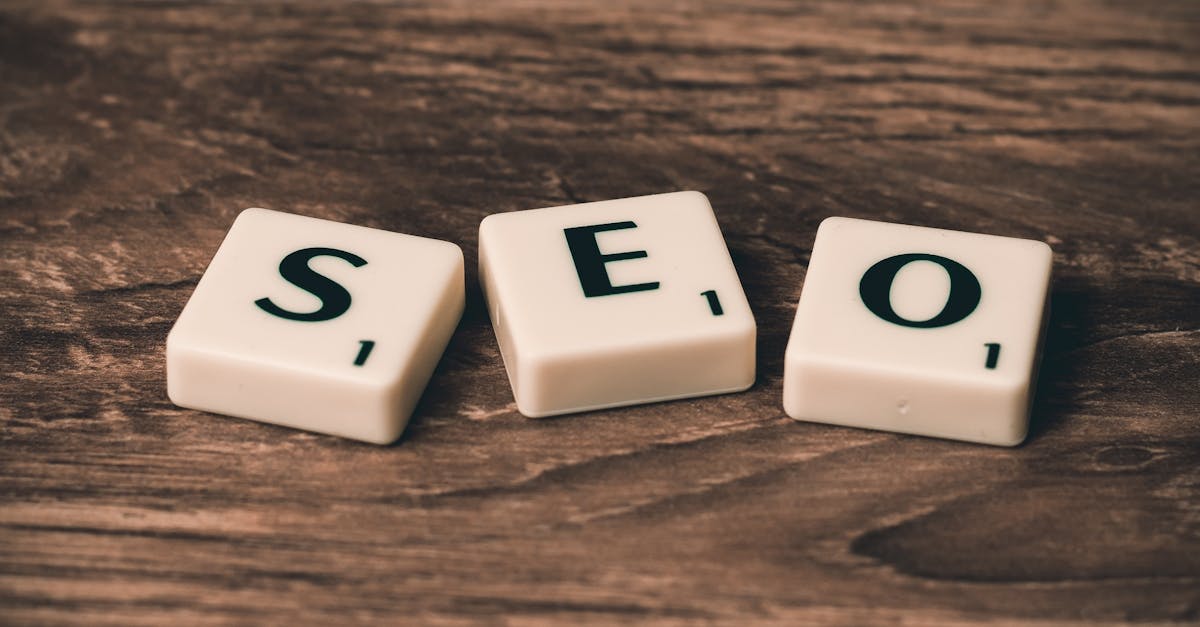
Table Of Contents
Freelancers vs. Agencies
When considering your SEO needs, both freelancers and agencies offer distinct advantages. Freelancers often provide personalised service and flexibility, tailoring strategies to suit specific client goals. Many freelancers excel in niche areas, such as Local SEO, allowing them to focus on particular markets and target audiences effectively. Their rates can be lower compared to agencies, making them an attractive option for small businesses with limited budgets.
On the other hand, SEO agencies typically bring a wealth of experience and a comprehensive range of services under one roof. They often have teams of specialists in various SEO domains, from technical optimisation to content marketing, which can enhance overall performance. Agencies also possess more resources, enabling them to handle larger projects or simultaneous campaigns. For businesses aiming for extensive Local SEO initiatives, an agency may provide the strategic support to achieve broader visibility and results.
Pros and Cons of Each
When considering freelancers for SEO services, it’s important to weigh their advantages against the drawbacks. Freelancers often offer competitive rates and flexibility, which can be particularly appealing for small businesses or startups. They may also provide a more personalised approach, allowing for closer collaboration. However, relying on a single freelancer might result in limited expertise. Freelancers may also struggle with workload fluctuations, which could affect the consistency and timeliness of their services.
Agencies, on the other hand, bring a team of specialists to the table. This often results in a more comprehensive strategy that covers various aspects of SEO, including Local SEO. Agencies typically have more resources and can handle larger projects with multiple components effectively. Nevertheless, the costs can be significantly higher, and there may be less direct communication between clients and the team. Clients might find it challenging to build rapport, and responsiveness could vary depending on the agency’s structure.
PerformanceBased SEO Pricing
Performance-based SEO pricing models have gained traction in recent years, especially among businesses looking to optimise their online presence without committing to fixed monthly retainers. This approach ties costs directly to the results achieved, such as improvements in search rankings or increased website traffic. Clients often appreciate this model for its transparency and accountability, as expenses are incurred only when specific deliverables are met.
In the context of Local SEO, this pricing structure can be particularly advantageous for small businesses aiming to enhance their visibility in their respective communities. By linking payments to measurable outcomes like increased foot traffic or higher search rankings in local searches, companies can better assess the value of their investments. Such metrics empower businesses to collaborate closely with SEO providers, ensuring that strategies align with their unique goals and market dynamics.
PayPerClick vs. Organic Growth
Pay-per-click (PPC) advertising offers immediate visibility and traffic to a website. Businesses pay for ad placements on search engines, leading to instant results especially beneficial for targeted campaigns. The control over budget and the ability to adjust ads based on performance make this approach appealing. However, reliance on PPC can lead to ongoing costs without long-term organic growth strategies.
Organic growth, on the other hand, focuses on ranking high in search engine results through local SEO practices and content optimisation. While this approach takes time and consistent effort, it often results in sustainable traffic and brand authority. Investing in organic growth reduces reliance on paid promotions, ultimately leading to a more reliable return on investment. For local businesses, integrating local SEO strategies can significantly enhance visibility within specific geographic areas.
Budgeting for LongTerm SEO
When budgeting for long-term SEO, businesses must consider the unique costs associated with their specific objectives and target markets. Companies focusing on Local SEO may find that investment in optimising their presence on platforms like Google My Business yields significant returns. Regular updates, content creation, and maintaining local citations can ensure visibility in community searches while fostering trust among local customers.
Moreover, tracking the effectiveness of SEO efforts is crucial for understanding ROI. This means allocating resources not only for immediate gains but also for ongoing adjustments based on performance metrics. A sustainable approach to SEO requires patience and a commitment to continuous improvement, especially in competitive local marketplaces where small nuances can significantly impact overall success.
Understanding ROI in SEO Investments
Measuring the return on investment (ROI) for SEO initiatives is crucial for businesses in Australia, especially those focusing on Local SEO. By analysing metrics such as website traffic, conversion rates, and organic search rankings, companies can determine the effectiveness of their SEO strategies. Successful Local SEO can lead to increased visibility in local search results, ultimately translating into more customers and higher revenue. Tracking these elements allows businesses to adjust their strategies and budget allocations effectively.
For Local SEO, understanding the correlation between investment and long-term benefits is essential. Initial costs may seem significant, but the right approach can yield substantial returns over time. Businesses should consider factors such as customer lifetime value and the increasing importance of local search among Australian consumers. By developing a clear understanding of how SEO investments lead to increased visibility and customer engagement, companies can make informed decisions about their marketing budgets.
FAQS
What factors influence the cost of SEO services in Australia?
The cost of SEO services in Australia can be influenced by various factors, including the size of the business, the complexity of the SEO strategy, the level of competition in the industry, and the specific goals of the campaign.
How much should I expect to pay for freelance SEO services in Australia?
Freelance SEO services in Australia typically range from AUD 50 to AUD 150 per hour, depending on the freelancer's experience and expertise. Some may also offer monthly packages starting from around AUD 500.
Are SEO agencies more expensive than freelancers in Australia?
Generally, yes. SEO agencies often charge higher rates than freelancers due to their comprehensive service offerings, team expertise, and additional resources. Agency prices can range from AUD 1,000 to AUD 10,000 per month, depending on the scope of services.
What is performance-based SEO pricing and how does it work?
Performance-based SEO pricing is a model where payment is tied to the achievement of specific results, such as increased traffic or higher rankings. This model can be beneficial as it aligns the agency’s incentives with the client's goals.
How can I budget for long-term SEO investments?
To budget for long-term SEO investments, consider setting aside a monthly budget that reflects your business goals, industry standards, and the expected ROI. It's also important to monitor performance and adjust your budget as needed to achieve desired results.

















































